All 8 of us were going to do the same tour today so planned to meet up in the lounge and get on the same bus. However, when the 4 of us arrived we were channeled through quickly and then had to wait in the corridor. Later we found another boat had arrived in so we couldn’t get off the boat until it had berthed. It meant we were on different tours to the other 4 although we did see them at times on the site.
Our guide was known as Amy
. John was less keen on her as she was loud but the rest of us were very happy with her commentary. She had been an English teacher, retrained in archeology, spent time in New York studying and had been a guide for 18 years. She referred often to Holland America as ‘our cruise line’ so we suspect she mainly does tours for them. Later she said she and other local guides had pushed for the ‘recommended shopping program’ here so people did not buy fake carpets. She taught us to say Sheerefat (cheers) and was impressed that John knew to say tea-sugar-drum for thank you.
She told us that the port name meant Bird’s Island and the 900 cruse ships had stopped here last year. The country is part of Asia Minor. The main agricultural products are cotton and mulberries (for silk) and Turkish silk is ‘better’ because it is white as the cocoons are on female rather then male plants. One mile of silk comes from 1 cocoon. We were also told about the local drink, raki or lions blood, which is very strong and also tastes like licorice if diluted
. She told us that the country is officially secular although Islam is the main religion.
The Ephesus site we were to visit was the 3rd city site. The 2nd site was used from 700 BC until 300 BC. The 3rd city was here for 1000 years, before the silting up of the port area and the subsequent malaria it brought meant the settlement moved. The 4th site was used from the 7th to 14th centuries and the 5th was then set up by the Christians.
It is believed that 40% of the city has been unearthed. It is the best preserved Aegean ancient city, mainly because it was covered with silt. Archeologists are uncovering it slowly and Amy kept mentioning the international nature of the work which began in 1868 with a German and is now lead by Turks. She moved us fairly quickly at the start so we were ahead of the worst of the crowds. It was also not too hot so we were very lucky with our visit.
Like almost all visitors we started in the top city
. This area had mainly Greek ruins and Amy explained that the Greeks didn’t have mortar so there were no arches here. She showed us how the columns were locked together with male and female faces and said they would have been joined with lead but that would have been looted over time. Of course, many of the original blocks would have also been taken but the lead was the most portable. The main building material was the local marble so we did have to move with care because it was slippery.
We saw the Temple of Isis which was in the original market place. Amy was good at setting the scene and pointed out that there was a thriving industry selling silver and gold images of the Gods to visitors so honouring them made commercial sense as well as religious sense. The site of the Parliament was here, with space for its 500 members. The area is now far from the sea but in its heyday the port was where the road is now. It looked like about 50 feet of silt had covered the city.
As we moved down the Roman buildings became evident
. We were shown the statue of Nike and the part where the Nike swish symbol has developed from. She was also the goddess of gambling. When we commented on the size of the buildings we were reminded that the Romans had plenty of 2 things, time and slaves. We also saw the remains of the statue of the Emperor standing on a ball which represented his power over the Earth, suggesting that maybe the Romans thought the world was a sphere.
This area had the remains of the public baths, then latrines and what was allegedly a brothel. The latrines had clean water running in footbaths and the used water from the baths ran under the ‘toilets’ into sewers. There were also public fountains, and Trajan’s fountain named after the emperor. The Greeks had to carry water, but the ‘posh’ houses here had running water. These terrace houses are still being excavated and there was a tour which would have taken us in but it had very restricted numbers and a very high cost.
We saw the area where shops would have been with the original mosaic floors
. These were protected over the years by the silt so there is a lot of discussion about how to both show them and also protect them. Hadrian’s temple was opposite, with Medusa on the front and Fortuna on the keystone. At one side there were carvings of the Amazons from Lesbos.
The most impressive structure in this area is the library. It was the 3rd most important library in the world at the time, with the one in Alexandra being the largest. Books were scrolls and customs duty at the time was often paid by presenting a scroll. When competition between the libraries grew, Egypt stopped the export of papyrus so the others had to find their own ‘paper’. The 2nd library was at a place I can’t remember but the name parchment came from here and goat skin was used for the scrolls in Ephesus. The size of the building is impressive but then you focus on the details and they are even more impressive.
We were told a building in the area was either a gymnasium or the house where St Paul stayed
. Paul tried to preach here from 53AD to 57AD and hence upset the local merchants who made a lot of money from selling merchandise that represented the pagan gods. He was allegedly imprisoned for some time in the area. A silversmith called Demetrious is credited with stirring up the locals to oppose him.
We had to promise not to peek as we walked past the theatre, (which is still being excavated) until we got to the best view point. It is estimated that one third of the seats are still missing because it is believed to have held 25,000 people. This estimate is one tenth of the population of the city at the time, the standard size for such theatres. The acoustics are meant to be great with people like Elton John, Sting and Pavarotti singing here.
I had paid 4 euro for a book about the site and as we left we were told to pay no more than 3 euro. The others learned from my mistake and got cheaper books later. After this we drove past the area where the common people had their latrines and bathhouse. The final stop was the carpet sales pitch. On the way back to Kusadasi we were told how the original Turks came from Mongolia and were nomads. For this reason they learned to weave wool for warmth. The oldest hand-woven item in the world is 3000 years old and from Turkey. Amy said the local rugs are all double knotted so don’t pull out and woven by women not children. Weaving is supported by the Government because it is an extra income source for people in country areas hence supporting agriculture. The amount of work involved and the authenticity of the carpets bought from the store we were to visit was emphasised. She told us to check the traverse side, known in Turkey as the party side.
We had Turkish delight and a choice of drinks while we watched the various carpets being displayed. The presentation was very similar to Tunisia although here there were also some modern rug designs. Then the harder sel camel, with extra people coming in to talk to individuals. We had no intention of buying and didn’t.
After lunch on board and a bit of a break Irene Raewyn and I wandered the market for a couple of hours. We didn’t buy much and even had to search to find the Post Office. The shops on the cruise pier were fixed price and that gave us an idea of prices. John used the Internet here and although he had a frustrating time with the speed he did get some pictures uploaded.
We had booked a meal in the Italian restaurant for the 8 of us at 8.30pm, however, by then John was not feeling well so he had a room service dinner in the hope he would be better for Athens in the morning. The rest of us enjoyed the change, especially the desserts.
Effusing over Ephusus
Monday, October 04, 2010
 Kusadasi, Turkish Aegean Coast, Turkey
Kusadasi, Turkish Aegean Coast, Turkey
Other Entries
-
123Roamin' Rome
Sep 1717 days prior Rome, Italyphoto_camera8videocam 0comment 0
Rome, Italyphoto_camera8videocam 0comment 0 -
124All aboard please!!
Sep 1816 days prior Civitavecchia, Italyphoto_camera8videocam 0comment 0
Civitavecchia, Italyphoto_camera8videocam 0comment 0 -
125Birthday on the Med
Sep 1915 days prior Livorno, Italyphoto_camera38videocam 0comment 0
Livorno, Italyphoto_camera38videocam 0comment 0 -
126A lucky break at Monte Carlo...
Sep 2014 days prior Monte-Carlo, Monacophoto_camera34videocam 0comment 3
Monte-Carlo, Monacophoto_camera34videocam 0comment 3 -
127The rain in Spain...
Sep 2113 days prior Barcelona, Spain and Canary Islandsphoto_camera22videocam 0comment 0
Barcelona, Spain and Canary Islandsphoto_camera22videocam 0comment 0 -
128Getting into Gaudi
Sep 2212 days prior Barcelona, Spain and Canary Islandsphoto_camera6videocam 0comment 0
Barcelona, Spain and Canary Islandsphoto_camera6videocam 0comment 0 -
129Meandering through Mallorca
Sep 2311 days prior Mallorca, Spain and Canary Islandsphoto_camera5videocam 0comment 0
Mallorca, Spain and Canary Islandsphoto_camera5videocam 0comment 0 -
130A lazy day at sea
Sep 2410 days prior Palma de Mallorca, Spain and Canary Islandsphoto_camera0videocam 0comment 0
Palma de Mallorca, Spain and Canary Islandsphoto_camera0videocam 0comment 0 -
131Out of Africa
Sep 259 days prior La Goulette, Tunisiaphoto_camera9videocam 0comment 0
La Goulette, Tunisiaphoto_camera9videocam 0comment 0 -
132Lazy Sunday in Sicily
Sep 268 days prior Trapani, Italyphoto_camera7videocam 0comment 0
Trapani, Italyphoto_camera7videocam 0comment 0 -
133Amazing Amalfi
Sep 277 days prior Naples, Italyphoto_camera7videocam 0comment 0
Naples, Italyphoto_camera7videocam 0comment 0 -
134Rendezvous with Irene and Raewyn
Sep 286 days prior Civitavecchia, Italyphoto_camera1videocam 0comment 1
Civitavecchia, Italyphoto_camera1videocam 0comment 1 -
135All at sea
Sep 295 days prior Civitavecchia, Italyphoto_camera3videocam 0comment 1
Civitavecchia, Italyphoto_camera3videocam 0comment 1 -
136Hitting the Wall in Dubrovnik
Sep 304 days prior Dubrovnik, Croatiaphoto_camera10videocam 0comment 1
Dubrovnik, Croatiaphoto_camera10videocam 0comment 1 -
137Checking out Corfu
Oct 013 days prior Corfu Town, Greecephoto_camera6videocam 0comment 0
Corfu Town, Greecephoto_camera6videocam 0comment 0 -
138Lord of the Rings
Oct 022 days prior Katákolon, Greecephoto_camera5videocam 0comment 1
Katákolon, Greecephoto_camera5videocam 0comment 1 -
139Stunning Santorini
Oct 031 day prior Santorini, Greecephoto_camera10videocam 0comment 2
Santorini, Greecephoto_camera10videocam 0comment 2 -
140Effusing over Ephusus
Oct 04 Kusadasi, Turkeyphoto_camera6videocam 0comment 0
Kusadasi, Turkeyphoto_camera6videocam 0comment 0 -
141Striking out in Athens
Oct 051 day later Athens, Greecephoto_camera5videocam 0comment 0
Athens, Greecephoto_camera5videocam 0comment 0 -
142Loungin' about
Oct 062 days later Messina, Italyphoto_camera5videocam 0comment 3
Messina, Italyphoto_camera5videocam 0comment 3 -
143Walking on the Moon
Oct 073 days later Messina, Italyphoto_camera6videocam 0comment 2
Messina, Italyphoto_camera6videocam 0comment 2 -
144Ciao Noordam, Bonjourno Roma
Oct 084 days later Rome, Italyphoto_camera5videocam 0comment 0
Rome, Italyphoto_camera5videocam 0comment 0 -
145The Pope's place
Oct 095 days later Rome, Italyphoto_camera8videocam 0comment 0
Rome, Italyphoto_camera8videocam 0comment 0 -
146Ciao Roma
Oct 106 days later London, United Kingdomphoto_camera3videocam 0comment 0
London, United Kingdomphoto_camera3videocam 0comment 0 -
147Big wheel keep on turning...
Oct 117 days later London, United Kingdomphoto_camera7videocam 0comment 0
London, United Kingdomphoto_camera7videocam 0comment 0 -
148Waxing lyrical
Oct 128 days later London, United Kingdomphoto_camera3videocam 0comment 0
London, United Kingdomphoto_camera3videocam 0comment 0 -
149The 4 Seasons in one day
Oct 139 days later London, United Kingdomphoto_camera3videocam 0comment 2
London, United Kingdomphoto_camera3videocam 0comment 2 -
150An appearance at Brighton
Oct 1410 days later London, United Kingdomphoto_camera5videocam 0comment 0
London, United Kingdomphoto_camera5videocam 0comment 0 -
151Oxford Blues
Oct 1511 days later London, United Kingdomphoto_camera5videocam 0comment 0
London, United Kingdomphoto_camera5videocam 0comment 0 -
152To Cookie Bear country
Oct 1612 days later Shrewsbury, United Kingdomphoto_camera1videocam 0comment 0
Shrewsbury, United Kingdomphoto_camera1videocam 0comment 0 -
153Cache and Dash in the Country
Oct 1713 days later Shrewsbury, United Kingdomphoto_camera4videocam 0comment 0
Shrewsbury, United Kingdomphoto_camera4videocam 0comment 0 -
154Riding down from Bangor.........
Oct 1814 days later Shrewsbury, United Kingdomphoto_camera6videocam 0comment 0
Shrewsbury, United Kingdomphoto_camera6videocam 0comment 0 -
155Ludlow revisited
Oct 1915 days later Shrewsbury, United Kingdomphoto_camera5videocam 0comment 0
Shrewsbury, United Kingdomphoto_camera5videocam 0comment 0 -
156Robin Hood and Trent Bridge
Oct 2016 days later Shrewsbury, United Kingdomphoto_camera4videocam 0comment 0
Shrewsbury, United Kingdomphoto_camera4videocam 0comment 0 -
157Oh Dr Beeching!!
Oct 2117 days later Shrewsbury, United Kingdomphoto_camera5videocam 0comment 0
Shrewsbury, United Kingdomphoto_camera5videocam 0comment 0 -
158Rambling around Shrewsbury
Oct 2218 days later Shrewsbury, United Kingdomphoto_camera8videocam 0comment 0
Shrewsbury, United Kingdomphoto_camera8videocam 0comment 0

 Kusadasi, Turkish Aegean Coast, Turkey
Kusadasi, Turkish Aegean Coast, Turkey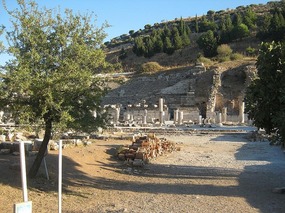
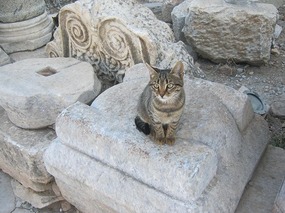
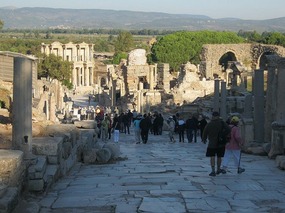
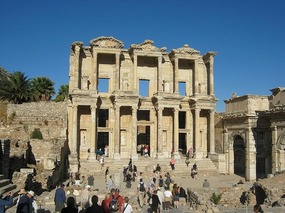
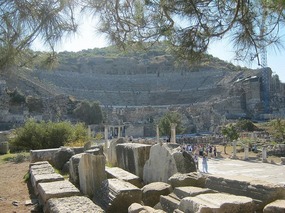
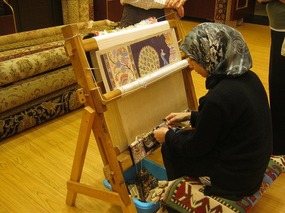








2025-05-22